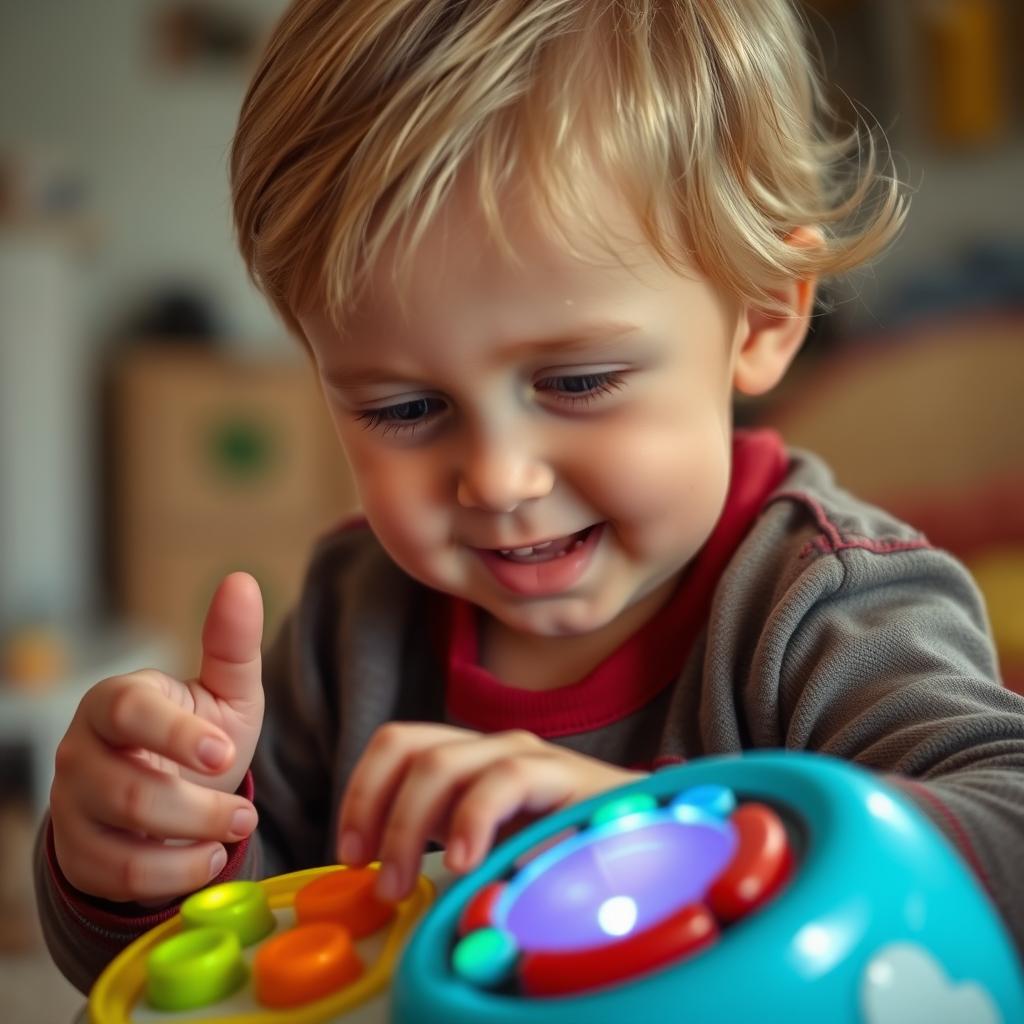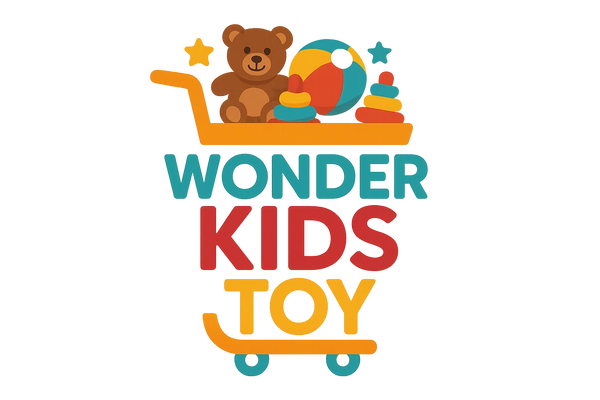The joyful sounds of a child discovering music for the first time create memories that last a lifetime. Toy musical instruments offer more than just fun—they're powerful tools for developing fine motor skills, enhancing creativity, and fostering early cognitive development. As parents, finding the right musical toys that balance educational value with entertainment can feel overwhelming. Which instruments are age-appropriate? How do you choose quality options that will engage your child while supporting their development?
In this comprehensive guide, we'll explore the wonderful world of toy musical instruments and help you discover the perfect starting point for your little musician's journey. From simple percussion to interactive keyboards, we'll cover everything you need to know to make an informed choice that will have your child creating beautiful melodies in no time.

Developmental Benefits of Toy Musical Instruments
Before diving into specific recommendations, let's understand why toy musical instruments deserve a special place in your child's toy collection. These musical tools offer remarkable developmental advantages that extend far beyond simple entertainment:
Physical Development
- Fine motor skills develop as children grasp, shake, and manipulate different instruments
- Hand-eye coordination improves when playing instruments like xylophones that require precision
- Bilateral coordination strengthens when using both hands to play drums or keyboards
Cognitive Growth
- Pattern recognition emerges naturally through rhythm and melody
- Memory enhancement occurs when remembering sequences and songs
- Math skills develop through understanding rhythm, counting, and timing
Emotional & Social Benefits
- Self-expression flourishes through creating sounds and music
- Confidence building happens with each musical achievement
- Emotional regulation improves through rhythmic activities
Language & Creative Development
- Language skills strengthen through musical patterns similar to speech
- Creative thinking expands through musical experimentation
- Auditory discrimination develops by distinguishing different sounds
Ready to boost your child's development through music?
Explore our carefully curated collection of toy musical instruments designed to support your child's growth while providing hours of joyful play.

Key Factors to Consider When Choosing Toy Musical Instruments
Selecting the right toy musical instruments for your child involves several important considerations. Here's what to keep in mind as you explore the options:
Age-Appropriateness
Different instruments suit different developmental stages. For babies and young toddlers (6-18 months), focus on simple shakers, rattles, and drums that are easy to grasp. For older toddlers and preschoolers (2-5 years), consider xylophones, keyboards, and simple string instruments that introduce more complex concepts.

Safety & Quality
Always prioritize instruments made from non-toxic materials with rounded edges and no small, detachable parts for younger children. Look for sturdy construction that can withstand enthusiastic play. Quality instruments produce better sounds, which helps children develop accurate auditory discrimination and makes the experience more rewarding.

Sound Variety & Volume
Choose instruments that offer a range of sounds to keep children engaged. Consider volume control features or naturally quieter instruments if noise is a concern in your household. Some toy musical instruments come with volume adjustments or headphone options for more peaceful play sessions.

Durability
Children can be rough with their toys, so durability matters. Wooden instruments often last longer than plastic ones and may produce better sounds. Look for reinforced construction in areas that will see the most use, such as drumheads or xylophone mallets.

Educational Value
The best toy musical instruments grow with your child and offer progressive learning opportunities. Some include color-coded notes, song cards, or companion apps that teach basic music concepts. These features extend the toy's usefulness and educational value over time.

Engagement Factor
Consider how interactive the instrument is and whether it will maintain your child's interest. Multi-functional instruments that can be played in different ways often provide longer-lasting engagement. Look for features that grow with your child's abilities to extend the toy's useful life.

By considering these factors, you'll be better equipped to select toy musical instruments that are not only fun but also developmentally appropriate and durable enough to withstand years of creative play.

Top 5 Toy Musical Instruments for Beginners
Based on developmental benefits, durability, and engagement factor, here are our top recommendations for introducing your child to the joy of making music:
1. Mini Keyboards & Pianos
Toy keyboards introduce children to melody and harmony while developing finger dexterity. The Melody Maker Keyboard features color-coded keys that match included song cards, making it easy for beginners to play recognizable tunes right away. With built-in songs, sound effects, and recording capabilities, these instruments offer multiple ways to engage with music.
Best for:
- Ages 3+ (simpler models available for younger children)
- Developing finger independence and coordination
- Introduction to melody, harmony, and song structure

2. Xylophones & Percussion Sets
Xylophones and percussion sets are perfect first toy musical instruments because they're intuitive to play and provide immediate auditory feedback. The Rainbow Beat Xylophone features color-coded metal bars that produce clear, pleasant tones. Many sets include multiple percussion instruments like tambourines, maracas, and bells, allowing children to explore different sounds and rhythms.
Best for:
- Ages 1+ (with age-appropriate mallets)
- Developing hand-eye coordination and rhythm
- Understanding cause and effect through sound

3. Toy Guitars & Ukuleles
Small string instruments introduce children to a different type of music-making. The Strum & Learn Guitar features color-coded strings and fret guides that make it easy for beginners to play simple songs. These instruments help develop finger strength and coordination while introducing concepts of melody and rhythm.
Best for:
- Ages 3+ (simpler models for younger children)
- Developing fine motor skills and finger strength
- Understanding string instruments and chord concepts

4. Hand Drums & Shakers
Drums and rhythm instruments are often the most intuitive for young children to play. The Bongo Beat Drum Set includes two connected drums with different tones and comes with soft-tipped drumsticks designed for little hands. Shakers, maracas, and tambourines complement drums by adding different textures to rhythmic exploration.
Best for:
- Ages 1+ (even babies can enjoy simple shakers)
- Developing rhythm awareness and coordination
- Encouraging movement and physical expression

5. Interactive Music Mats
For children who love movement, interactive music mats combine physical activity with musical exploration. The Dance & Play Piano Mat features oversized piano keys that children can play by stepping or jumping on them. These full-body instruments encourage gross motor development while teaching cause and effect through sound.
Best for:
- Ages 2+
- Combining music with physical movement
- Group play and social interaction

Find the perfect musical starter set for your child
Browse our complete collection of high-quality toy musical instruments designed to grow with your child's abilities and interests.
Pro Tips for Making the Most of Toy Musical Instruments
Once you've selected the perfect toy musical instruments for your child, these expert tips will help you maximize their educational value and enjoyment:
Create a Dedicated Music Space
Designate a special area where your child can freely explore their instruments without worry about noise or mess. This dedicated space signals that music-making is a valued activity in your home and encourages regular practice and exploration.
Join the Fun
Children learn through imitation, so play alongside them! You don't need musical training—simply showing enthusiasm for making sounds together communicates that music is enjoyable and worth exploring. Family jam sessions create wonderful bonding opportunities.
Incorporate Music into Daily Routines
Use toy musical instruments during transitions, clean-up time, or as part of your bedtime routine. Creating special songs for different activities helps children understand daily rhythms while making routine tasks more enjoyable.
Explore Complementary Resources
Enhance the experience with music-themed books, simple sheet music designed for beginners, or child-friendly music apps that complement physical instruments. These resources provide structure while encouraging creative exploration.
Focus on Fun, Not Perfection
At this early stage, the goal is to foster a love of music, not to create perfect performances. Celebrate experimentation and creative expression rather than "correct" playing. This approach builds confidence and maintains interest.
Rotate Instruments
If you have multiple toy musical instruments, consider rotating which ones are available to maintain novelty and interest. This strategy also helps children discover connections between different instruments and sound types.

Group Musical Activities to Try
- Sound Scavenger Hunt: Hide instruments around a room and have children find them by following sound clues
- Musical Storytelling: Create sound effects to accompany favorite stories
- Rhythm Name Game: Take turns drumming out the syllables in each person's name
- Dance and Freeze: Play instruments while dancing, then stop when the designated leader stops playing
Remember that early exposure to toy musical instruments is about exploration and joy, not formal training. By keeping the experience playful and pressure-free, you'll help nurture a lifelong appreciation for music.
Ready to start your child's musical journey?
Discover our selection of beginner-friendly toy musical instruments designed to make learning fun and engaging.
Start Your Child's Musical Journey Today
Introducing toy musical instruments to your child opens a world of developmental benefits while creating joyful memories that can last a lifetime. From enhancing fine motor skills to boosting cognitive development and fostering creativity, these musical toys offer far more than simple entertainment.
When selecting your child's first musical instruments, remember to consider age-appropriateness, safety, sound quality, and durability. Start with simple percussion instruments for the youngest children, then gradually introduce more complex options like xylophones, keyboards, and string instruments as they grow.
Most importantly, approach musical exploration with a sense of play and discovery. By creating a supportive environment where experimentation is encouraged, you'll help nurture not only musical skills but also confidence, creativity, and a lifelong appreciation for the arts.
Give the gift of music to your child
Browse our complete collection of high-quality toy musical instruments designed specifically for young beginners.

At what age can my child start using musical instruments?
Children can begin exploring simple toy musical instruments as early as 6 months old with age-appropriate options like soft shakers and rattles. As they develop, you can introduce more complex instruments: drums and simple percussion at 12-18 months, xylophones around 18-24 months, and keyboards or string instruments around 3 years. Always choose instruments specifically designed for your child's developmental stage.
How do I manage the noise level of toy musical instruments?
If noise is a concern, look for instruments with volume control features or naturally quieter options like soft shakers or instruments with felt mallets. Establishing "music time" boundaries can help manage when loud play is appropriate. Some electronic instruments offer headphone options for quiet practice. You can also create a designated music space away from quiet areas of your home.
Do toy musical instruments actually help prepare children for real instruments later?
Yes! Quality toy musical instruments help develop many foundational skills needed for formal music education, including rhythm awareness, auditory discrimination, fine motor control, and basic music concepts. They also foster a positive relationship with music-making that can motivate children to pursue more formal training when they're ready. Many music educators recommend this early, playful exposure before beginning structured lessons.












